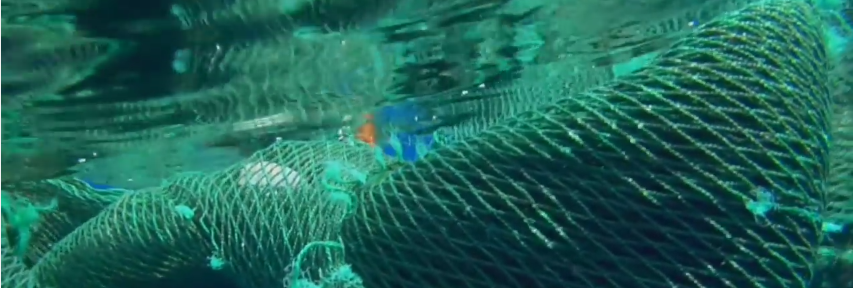Garbage patches across the oceans – visualization experiment

The experts estimated about 70% of litter that ends up in the world's oceans, sinks to the bottom. The rest of the marine debris remains floating under the ocean surface and is carried around by the ocean currents. The floating debris mainly contains undegradable tiny plastic particles that can mix with larger items, such as fishing gear or shoes, and concentrates in parts of the ocean, gradually forming the so-called garbage patches, or marine trash vortices.
The Great Pacific Garbage Patch, is the largest collection of marine debris in the world. It spans waters from the West Coast of North America to Japan. Two other areas of high trash concentration are the garbage patches in the Atlantic and Indian ocean.
Greg Shirah and Horace Mitchell have published their garbage patch visualization experiment results online on August 10, 2015, in the NASA's Scientific Visualization Studio. Their animations were also presented on the SIGGRAPH 2015 conference
The team started the experiment with NOAA's data from floating, scientific buoys, distributed across the oceans for the last 35 years. The buoys are visualized as white dots in the videos below. As new buoys are continually released, it has been difficult to determine their current movement.
After the map has been cleared and starting locations of all the buoys added, interesting patterns have started to emerge. For example, if all the buoys were let go simultaneously, it was possible to observe their migration pattern, and it has become clearly visible that the buoys migrate to 5 known gyres, the so-called ocean garbage patches.
This pattern is also visible in a computational model of ocean currents, called ECCO-2. If the particles are released evenly around the world, the modeled ocean current migrate them to garbage patches, as well. Although the retimed buoys and modeled particles haven't reacted to currents at the same times, the data did tend to accumulate across the same regions, which proves the result robustness.
The following series of animations shows the experiment process.

Video credit: NASA, Scientific Visualization Studio
The video above shows the NOAA drifter buoys released at various times and locations around the world. New buoys get released continuously, as the video proceeds. The buoy patterns are due to the way that they were released. For example, a boat sailing in a roughly straight line might release a series of buoys every few hours causing a line of dots to appear; or, a bunch of buoys might be released near a research station making the buoys look like they all emerge from one location.


Video credit: NASA, Scientific Visualization Studio
The above visualization shows interesting buoy movement patterns, which the previous video hasn't showed because the buoys were continuously released. In this case, each buoy timing has been shifted, so their release times was the same. This means that the buoys you see at any particular time have been in the water the same amount of time. While there are likely seasonal variations in how buoys move, the general pattern shows that the buoys tend to move around until they move into slow moving larger circulation patterns which are the garbage patches.


Video credit: NASA, Scientific Visualization Studio


Color bar for the ECCO2 particle simulation ranging from blue which is very slow (close to zero) meters per second up to cyan which is 0.25 meters per second and higher.
The third animation shows the two data sets with the retimed NOAA drifter buoys in white on top combined with the ECCO2 simulated particles in cyan/blue on the bottom. Both the observed NOAA drifters and the ECCO2 particle simulation seem to evolve towards the garbage patches.
See also:


Video credit: KQED QUEST
Featured image: Plastic in the Pacific, Pacific Garbage Patch, 2010. Image credit: KQED QUEST

Commenting rules and guidelines
We value the thoughts and opinions of our readers and welcome healthy discussions on our website. In order to maintain a respectful and positive community, we ask that all commenters follow these rules.